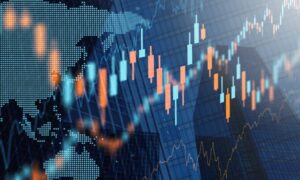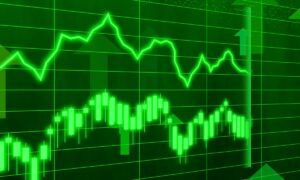The stock market can be a daunting and complex world for beginners, filled with unfamiliar terms and numbers that seem to fluctuate wildly. If you’re new to investing or just looking to gain a better understanding of how the stock market works, you’ve come to the right place. In this beginner’s guide, we’ll focus on one of the most well-known stock market indices, the Dow Jones Industrial Average (DJIA), and break down the key concepts that will help you navigate the world of stocks.
What Is the Dow Jones Industrial Average?
The Dow Jones Industrial Average, often referred to simply as the Dow, is one of the oldest and most widely recognized stock market indices in the world. It was created by Charles Dow and Edward Jones in 1896 and is now maintained by S&P Dow Jones Indices. The Dow is essentially a benchmark that represents the performance of 30 large, publicly traded companies listed on the New York Stock Exchange (NYSE) and the NASDAQ.
The Components of the Dow
Understanding the components of the Dow is a crucial first step. The index includes 30 of the most significant and well-established companies in the United States, representing various industries. These companies are carefully selected by the editors of The Wall Street Journal and are subject to change over time as the economic landscape evolves.
Some of the companies that have historically been part of the Dow Jones Industrial Average include Apple, Microsoft, Boeing, Coca-Cola, and Johnson & Johnson. These companies are considered bellwethers for their respective industries, and their stock prices and market performance are closely monitored by investors and financial analysts.
How Is the Dow Calculated?
The Dow is a price-weighted index, which means that the value of the index is determined by the stock prices of its 30 components. Unlike other indices, such as the S&P 500, where the weight of each stock is based on its market capitalization, the Dow gives more influence to stocks with higher prices. This can sometimes lead to peculiar situations where a higher-priced stock has a more significant impact on the index’s movement than a lower-priced stock, even if the lower-priced stock represents a larger company.
To calculate the Dow, the sum of the stock prices of its 30 components is divided by a divisor. This divisor is adjusted to account for stock splits, dividends, and other corporate actions. The exact formula is more complex, but this simplified explanation gives you an idea of how the index works.
The Dow’s Historical Performance
Over the years, the Dow Jones Industrial Average has witnessed significant fluctuations, reflecting the economic and financial changes in the United States and around the world. It has experienced both bull markets (periods of rising stock prices) and bear markets (periods of falling stock prices).
One of the most infamous events in the history of the Dow is the stock market crash of 1929, which led to the Great Depression. The Dow lost a substantial percentage of its value during this period, causing financial turmoil. However, it has also seen remarkable growth and reached record highs during bull markets.
Using the Dow as an Investment Indicator
While the Dow is not a comprehensive representation of the entire stock market, it is often considered a barometer of the broader economy. Investors and financial experts use the Dow to gauge the overall health and direction of the stock market. When the Dow is on an upward trend, it is generally seen as a positive indicator for the economy, while a declining Dow can be a sign of economic uncertainty.
Understanding Dow Futures and Options
Dow futures and options are financial instruments that allow traders to speculate on the future direction of the Dow Jones Industrial Average. Dow futures are contracts that obligate the buyer to purchase, and the seller to sell, a specified number of Dow index points at a predetermined price on a specific future date. Dow options, on the other hand, give the buyer the right, but not the obligation, to buy or sell Dow index points at a predetermined price on or before a specific future date.
Futures and options can be used for various purposes, including hedging against market volatility, leveraging investment positions, and speculating on market movements. However, they are also complex financial instruments that come with risks, and they may not be suitable for beginners.
Investing in the Dow
If you’re interested in investing in the Dow, you can do so through various means. The most common approach is to invest in exchange-traded funds (ETFs) or mutual funds that track the performance of the Dow. These funds provide diversification and allow you to own a piece of all 30 Dow components without having to buy each individual stock.
Another way to invest directly in the Dow is by purchasing shares of the individual companies included in the index. Keep in mind that this approach requires more extensive research, and you’ll need a more substantial capital investment.
Diversification and Risk Management
Diversification is a critical concept when it comes to investing in the stock market. By holding a variety of assets, such as stocks from different industries and geographic regions, you can spread your risk and potentially reduce the impact of poor performance from any single investment. Diversification is a strategy that aims to balance risk and reward.
Long-Term vs. Short-Term Investing
Investors often fall into two broad categories: long-term investors and short-term traders. Long-term investors typically buy and hold investments for an extended period, often several years or more, with the goal of benefiting from the potential growth of their investments over time. Short-term traders, on the other hand, focus on shorter timeframes, looking to profit from price fluctuations over days, weeks, or months.
The Dow can be of interest to both types of investors. Long-term investors may use it as a benchmark to gauge the overall health of the stock market and make informed decisions about their investment portfolios. Short-term traders may use technical and fundamental analysis to predict short-term price movements and take advantage of market volatility.
Risks and Challenges
Investing in the stock market, including the Dow, comes with risks. Stock prices can be highly volatile, and there are no guarantees of making a profit. Economic, geopolitical, and market-specific factors can influence stock prices. It’s essential to be prepared for the possibility of losses and have a clear risk management strategy.
Conclusion
The Dow Jones Industrial Average is a well-known and respected stock market index that provides valuable insights into the performance of some of the largest companies in the United States. While it can be a helpful indicator for investors, it’s essential to remember that investing in the stock market involves risks, and it’s important to conduct thorough research and potentially seek the advice of a financial advisor before making investment decisions. As a beginner, it’s crucial to take your time to learn about the stock market, understand your investment goals and risk tolerance, and consider diversification as a strategy to manage risk. With patience and the right knowledge, you can begin your journey to becoming a successful investor in the world of stocks.


































